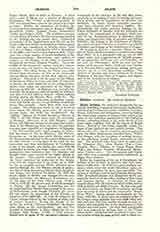

Siletz Indians, the collective designation for the rapidly dwindling remnant of some thirty small tribes, representing five linguistic stocks—Salishan, Yakonan, Kusan, Takelman, and Athapascan—formerly holding the whole coast country of Oregon from within a few miles of the Columbia southward to the California border, extending inland to the main divide of the coast range, together with all the waters of Rogue River. Several of the tribes originally within the range of this territory are now entirely extinct. The others, all on the verge of extinction, are now gathered upon the Siletz Reservation, Lincoln County, Northwest Oregon, with the exception of perhaps seventy on the adjoining Grande Ronde reservation to the east. The principal tribes from north to south were the Tillamook (Sal.), Alsea, Siuslaw (Yak.), Coos, Coquille (Kus.), Takelma or Upper Rogue River (Tak.), Six, Joshua, Tututini, Mackanotni, Shasta Costa, Chetco (Ath.). The Athapascan and Takelman tribes were commonly designated collectively as Rogue River Indians.
Before the beginning of the era of disturbance the Indians of the territory in question may have numbered 15,000 souls. In 1782-83 a great smallpox epidemic, which swept the whole Columbian region, reduced the population by more than one-third. The advent of trading vessels in the Columbia, dating from 1788, introduced disease and dissipation which poisoned the blood of all the tribes, leading to their rapid and hopeless decline. A visitation of fever and measles about 1823-25 wiped out whole tribes, and by 1850 probably not 6000 survived. In that year gold was discovered in the Rogue River country, resulting in an invasion of miners and the consequent “Rogue River Wars”, lasting almost continuously for six years, 1850-56. In these wars the southern tribes of the Oregon coast probably lost over 1000 killed outright and more than that number through wounds, exposure, and starvation due to the destruction of their villages and food stores. On their final subjugation they were removed by military force to the “Coast Reservation“, which had been established under various treaties within the same period, and to which several tribes had already peaceably removed. The Coast Reservation originally extended some ninety miles along the coast, but by the throwing open of the central portion in 1865 was divided into two, the present Siletz agency in the north, and the Alsea sub-agency in the south. In 1876 the latter was abandoned, the Indians being concentrated upon Siletz Reservation, to which about the same time were gathered also several vagrant remnant bands farther up the coast.
On September 1, 1857, the Coast Tribe Indians were officially reported to number: Siletz Reservation, 2049; Alsea, 690; refugee hostiles in mountains, about 250; remnant bands north of Siletz, 251; total, about 3240. Degraded, impoverished, and diseased, their condition could not easily be lower, and their superintendent states his conviction that any expectation of their ultimate civilization or Christianization was hopeless. “They have acquired all the vices of the white man, without any of his virtues; and while the last fifteen years have witnessed the most frightful diminution in their numbers, their deterioration, morally, physically, and intellectually has been equally rapid. Starvation, disease, and bad whiskey combined is rapidly decimating their numbers, and will soon relieve the government of their charge.”
Up to 1875 governmental provisions for moral or educational betterment was either lacking or entirely inadequate, and the only light in the darkness was afforded by the visits at long intervals of the devoted pioneer missionary, Father A. J. Croquette, of the neighboring Grande Ronde Reservation, who continued his ministry to both reservations for a period of nearly forty years. Protestant work was begun under Methodist auspices about 1872, but no building was erected until about twenty years later. Each is now represented by a regular mission, the Catholic denomination being in charge of the Jesuits. The majority of the Indians are accounted as Christians, having abandoned the old Indian dress and custom, besides almost universally using the English language. There is also a flourishing government school. Notwithstanding that the Indians are reported as “above the average” in civilization and comfortable condition, there is a steady and rapid decrease, due to the old blood taint which manifests itself chiefly in tuberculosis, and points to their speedy extinction. The approximate 3240 assigned to the reservation in 1857 had dwindled to approximately 1015 in 1880; 480 in 1900; and 430 in 1910, including mixed bloods. The work of assigning them to individual land allotments, begun in 1887, was finally concluded in 1902.
The various tribes differed but little in habit of life. Their houses were of cedar boards, rectangular and semi-subterranean for greater warmth. Rush mats upon the earth floor served for beds. Fish formed their chief subsistence, supplemented by acorns, camas root, berries, wild game, and grasshoppers; tobacco was the only plant cultivated. They had dugout canoes, and were. expert basket makers. Their chief weapon was the bow, and protective body armor of raw hide was sometimes worn. The ordinary dress of the man was of deer skin, and the woman, a short skirt of cedar bark fibre. Hats were worn by both sexes. Head flattening was not practiced, but tattooing was frequent. The dentalium shell was their most prized ornament and standard of value. Polygamy was common. The dead were generally buried in the ground, and the property distributed among the relatives. The government was simple and democratic, but captives and their children were held as slaves. There were no clans, and descent was paternal. Each linguistic group had its own myths and culture hero, or trans-former, who prepared the world for human habitation. Among. the Alsea these sacred myths could be told. During only one month of the year: Among the principal ceremonies were the acorn festival and the girls’ puberty dance.
JAMES MOONEY

